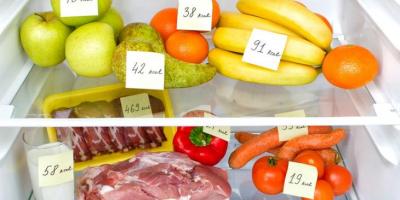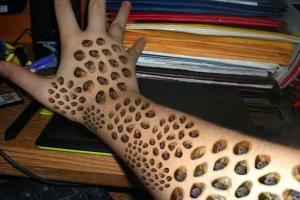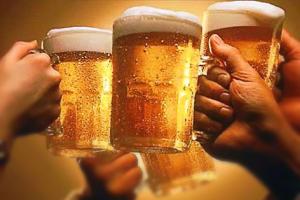The daily calorie intake is the total number of kilocalories that you can consume during the day so as not to gain weight. Weight loss according to this scheme at the time of the diet will be gradual and correct. With this approach, you can consume different foods without limiting yourself to your favorite dishes. Of course, each candy or sandwich with white bread will need to be calculated in your menu.
Calorie calculation for weight loss during the diet period, you can use formulas manually, or you can use our online calorie calculator. To calculate, just enter your age, weight and height. Your attention will be presented to the formulas of famous nutritionists, so you should not doubt their accuracy. This article will help you choose the right path to lose weight, based on the exact calculation of calories for each day. You will also learn the basic rules for compiling your menu. A balanced diet and accurate calorie counting are the two main levers that affect the gradual weight loss.
online calorie calculator
weight loss calculator
KBJU Calculator
| Your age | 0-3 months 4-6 months 7-12 months 1-3 years old 4-6 years old 6 years old (schoolchild) 7-10 years old 11-13 years old 14-17 years old 18-29 years old 30-39 years old 40-59 years old 60-74 years old over 75 years old |
| Floor: |
Pregnant: yes lactating (1-6 months) lactating (7-12 months) pregnant: no Your weight in kg. |
| Your physical activity | little physical activity light physical activity moderate physical activity high physical activity very high physical activity |
Calorie burn calculator
Why you need to count calories
Milk products
| PRODUCT | PROTEINS | FATS | CARBOHYDRATES | KKAL |
| Kefir low fat | 3 | 0,1 | 3,8 | 30 |
| Kefir fat | 2,8 | 3,2 | 4,1 | 59 |
| Milk | 2,8 | 3,2 | 4,7 | 58 |
| Ryazhenka | 3 | 6 | 4,1 | 85 |
| Sour cream 10% | 3 | 10 | 2,9 | 116 |
| Sour cream 20% | 2,8 | 20 | 3,2 | 206 |
| Curds and special curd mass | 7,1 | 23 | 27,5 | 340 |
| Processed cheese | 24 | 13,5 | 0 | 226 |
| Low-fat cottage cheese | 18 | 0,6 | 1,5 | 86 |
| Mayonnaise | 3,1 | 67 | 2,6 | 627 |
| Vegetable oil | 0 | 99,9 | 0 | 899 |
| Butter | 0,6 | 82,5 | 0,9 | 748 |
Bread and cereals
Vegetables and fruits
| PRODUCT | PROTEINS | FATS | CARBOHYDRATES | KKAL |
| Zucchini | 0,6 | 0,3 | 5,7 | 27 |
| White cabbage | 1,8 | — | 5,4 | 28 |
| Cauliflower | 2,5 | — | 4,9 | 29 |
| Potato | 2 | 0,1 | 19,7 | 83 |
| red carrot | 1,3 | 0,1 | 7 | 33 |
| cucumbers | 0,8 | — | 3 | 15 |
| Radish | 1,2 | — | 4,1 | 20 |
| Salad | 1,5 | — | 2,2 | 14 |
| Beet | 1,7 | — | 10,8 | 48 |
| tomatoes | 0,6 | — | 4,2 | 19 |
| Spinach | 2,9 | — | 2,3 | 21 |
| Bananas | 1,5 | — | 22,4 | 91 |
| Cherry | 0,8 | — | 11,3 | 49 |
| Pomegranate | 0,9 | — | 11,8 | 52 |
| Pear | 0,4 | — | 10,7 | 42 |
| Apples | 0,4 | — | 11,3 | 46 |
| Orange | 0,9 | — | 8,4 | 38 |
| Grapefruit | 0,9 | — | 7,3 | 35 |
| Lemon | 0,9 | — | 3,6 | 31 |
| Grape | 0,4 | — | 17,5 | 69 |
| Raspberries | 0,8 | — | 9 | 41 |
Dried fruits and beans
Meat
| PRODUCT | PROTEINS | FATS | CARBOHYDRATES | KKAL |
| Mutton | 16,3 | 15,3 | 0 | 203 |
| Beef | 18,9 | 12,4 | 0 | 187 |
| Rabbit | 20,7 | 12,9 | 0 | 199 |
| Lean pork | 16,4 | 27,8 | 0 | 316 |
| Pork fat | 11,4 | 49,3 | 0 | 489 |
| Veal | 19,7 | 1,2 | 0 | 90 |
| Beef Heart | 15 | 3 | 0 | 87 |
| beef tongue | 13,6 | 12,1 | 0 | 163 |
| Pork liver | 18,8 | 3,6 | 0 | 108 |
| Pig's heart | 15,1 | 3,2 | 0 | 89 |
| Pork tongue | 14,2 | 16,8 | 0 | 208 |
| Turkey | 21,6 | 12 | 0,8 | 197 |
| chickens | 20,8 | 8,8 | 0,6 | 165 |
| ducks | 16,5 | 61,2 | 0 | 346 |
Sausages
Eggs
| PRODUCT | PROTEINS | FATS | CARBOHYDRATES | KKAL |
| Chicken egg | 12,7 | 11,5 | 0,7 | 157 |
Fish and seafood
Sweets
It is necessary to use a calorie counter not only during the diet period, but also during normal nutrition. The main thing is to strictly monitor the minimum and maximum threshold of daily coloration. Accurate calculations in the process of losing weight are the key to proper and balanced nutrition.
To lose weight, you don't have to limit your calories. Consume the maximum possible number of kilocalories - resort to active physical activities! Calculate your daily calorie consumption on the calculator and allow yourself a delicious dinner or your favorite dessert.
1 Enter your weight
kg
2 Check the activities
- Housework and yard work
- Digging holes
Dusting
ironing
Car washing and polishing
window washing
Floor washing
washing dishes
Trimming trees and shrubs
Transportation of goods on a wheelbarrow
Moving furniture
Carrying boxes
Sweeping floors and carpets
Buying items for the home
Buying products
Watering house plants
Planting in the garden
Planting trees or bushes
sitting cooking
standing cooking
Work in the garden
Rake work
Hand scythe work
Working with a lawn mower
hanging clothes
Unloading lumber
Unpacking boxes
wood cutting
Manual snow removal
Folding clothes
Folding, carrying firewood
Washing by hand
Standing in line
Cleaning in the apartment
Lawn cleaning
leaf cleaning
Snow removal
Box packing
- Digging holes
- Fitness and sports
- Aqua aerobics
Aerobics intensive
Aerobics light
Badminton
Badminton
Basketball
Running 10 km/h
Running 15 km/h
Running 8 km/h
Skiing
Running in nature
Running up the stairs
cross country running
Jogging
Billiards
Boxing
Boxing with a bag
Struggle
Fast walk
fast swimming
Bicycle 10 km/h
Bicycle 20 km/h
Bicycle 25 km/h
Bicycle 30 km/h
Bicycle 35+ km/h
Bicycle Exercise bike (high activity)
Exercise bike (medium activity)
Exercise bike, warm-up
Riding, gallop
horse riding, trot
Riding, step
Water polo
Water skiing
Volleyball
Oriental gymnastics
Oriental martial arts
Handball
Golf
Canoeing
rowing machine
Darts
Jump rope exercises
Skating
Skiing
Roller skating
Skateboarding
Skiing down the mountains
Skittles
Curling
Skating
ski simulator
Table tennis
Hoop
Orientation on the ground
hiking
Swimming (butterfly)
Swimming (breaststroke)
Swimming (crawl)
Swimming (general)
Backstroke
Swimming and snorkeling
Beach volleyball
Diving
weight lifting
Work as an aerobics trainer
Stretching, stretching
Rhythmic gymnastics (easy)
Rhythmic gymnastics (heavy)
nordic walking
Gymnastics
Race walking
Step aerobics intensive
Step aerobics easy
Archery
Pistol shooting
Tennis (big)
Rider type trainers
Fencing
frisbee
Football
Hatha yoga
Walking 3 km/h
Walking 4 km/h
Walking 5 km/h
Walking 6 km/h
Walking 7 km/h
Walking 8 km/h
Walking up the stairs
Walking down the stairs
Walking in nature
Hockey
Field hockey
- Aqua aerobics
- Labor activity
- Work as an actor in the theater
Work as a bartender
Office work
Working in a bakery
Computer work
Work as a clerk
Work as a massage therapist
Work as an installer
Loader work
Working on a farm, a poultry house
Work as a carpenter
Working as a tailor
Work as a teacher
Work as a nurse
Work as a physical education teacher
Shoe repair
fruit picking
Garbage collection
Room cleaning
Horse care
Learning in the classroom
- Work as an actor in the theater
- Recreation, entertainment
- Active games with children
Knitting
Sitting guitar playing
Standing guitar playing
Piano playing
violin playing
Playing the trombone
Trumpet playing
flute playing
Playing with children sitting
Animal games
Feeding the baby
Bathing a child
Animal washing
Carrying children in your arms
dressing baby
Outdoor games with children
Taking a bath
Taking a shower
stroller
Walking with the dog
TV viewing
Sitting on the phone
Standing phone conversation
Needlework (sitting)
Needlework (standing)
Sex (active)
Sex (passive)
family walk
Dream
snow building
Dancing classical (slow)
Dances modern (fast)
Hair Styling
Sitting reading
Sewing
- Active games with children
3 Enter elapsed time
Metabolism is not able to exist separately without the consumption of calories, and vice versa. Metabolic processes that occur in the human body are directly related to the so-called energy exchange. The unit of measure for energy is the calorie.
The heart, respiratory system, liver and kidneys - it is these internal organs that account for the greatest energy costs. They are not interrupted even at rest. Scientists have found that in one hour each kilogram of the body burns 1 kcal, which in total gives us about 1800 kcal per day.
These figures are very ambiguous, as they depend on many components. To support the body in good shape, spend the maximum possible number of kilocalories - resort to active physical activities so that the work of the muscles is very intense. The online table and consumption analyzer will help you calculate all the necessary data.
Online Calorie Calculator
This counter is very convenient to use, as the counting is done in a fraction of a second:
- indicate body weight;
- type of activity (sports, fitness, sedentary work, entertainment);
- time spent;
- the system will calculate the result.
When splitting one gram of proteins, 4.1 kcal is released, fat - 9.3, carbohydrates - 4.1. Every second of life, we lose energy, releasing heat into the environment. The intensity of heat transfer depends on activity or inactivity.
On average, the daily energy consumption of the average representative of the stronger sex fluctuates around 2500-2700 kilocalories, the weak - 2000-2200. But all this is very approximate data, because a spread of 200 units can cause body fat.
It is better to use a modified version of the Mifflin-St. Geor daily calorie expenditure formula, which takes into account your parameters, the degree of activity - and therefore provides more accurate data. When calculating calories for weight loss, weight consumption is determined according to growth:
- in men: (10 x weight (kg) + 6.25 x height (cm) - 5 x age (g) + 5) x A;
- among women: (10 x weight (kg) + 6.25 x height (cm) - 5 x age (g) - 161) x A, Where:
А1 – minimum activity, =1.2;
A2 - weak, = 1.375;
А3 – medium, =1.55;
А4 – high, =1.725;
A5 - extra, \u003d 1.9.
The arithmetic of the numbers is quite simple: when losing weight, you should increase calorie consumption in relation to consumption, when gaining mass, on the contrary, and with a normal lifestyle, these indicators are equal. The balance lies in the elementary equation for measuring calorie consumption:
Nutritional value of food consumed = energy loss
To calculate your daily calorie consumption, you can also use the calorie consumption analyzer.
The main source of losing extra pounds per day, both in women and men, is sports. It improves well-being, has a positive effect on health, muscle tone, coordination, balance, reaction, promotes the development of logical thinking and helps to get rid of hated centimeters.
Even the smallest effort or movement one step brings you closer to the goal, and a long training time will allow you to do it by leaps and bounds, because the main calorie consumption by a person occurs precisely during physical exertion. To make it easier to determine how much you spend per day with certain exercises, we suggest using the following daily calorie consumption chart:
| Activity (calorie consumption per hour), kcal | per 1 kg of weight | per 80 kg of weight | per 70 kg weight | per 60 kg of weight | per 50 kg weight |
|---|---|---|---|---|---|
| walk | 4,5 | 360 | 315 | 270 | 225 |
| with Nordic walking | 5,7 | 456 | 399 | 342 | 286 |
| when walking 5 km/h | 4,5 | 360 | 315 | 270 | 225 |
| high intensity dancing (high calorie expenditure) | 6,9 | 554 | 485 | 416 | 346 |
| when cycling (when riding 20 km/h) | 7,7 | 617 | 540 | 463 | 386 |
| breaststroke swimming | 10,6 | 844 | 739 | 633 | 528 |
| crawl swimming | 8,1 | 651 | 570 | 489 | 407 |
| with water aerobics | 7,6 | 606 | 530 | 454 | 379 |
| hoop spinning (hula hoop) | 4.4 | 352 | 308 | 264 | 221 |
| on an exercise bike | 7,4 | 592 | 518 | 444 | 369 |
| running track 12 km/h | 11,4 | 912 | 798 | 684 | 570 |
| on an elliptical trainer (health disk) | 7,4 | 592 | 518 | 444 | 369 |
| on the rowing machine | 7,4 | 592 | 518 | 444 | 369 |
| jumping | 10,1 | 808 | 707 | 606 | 505 |
| sit-ups | 5,6 | 448 | 392 | 336 | 280 |
| jumping rope | 7,7 | 617 | 540 | 463 | 386 |
| rowing | 3,0 | 240 | 270 | 180 | 150 |
| step aerobics intensive | 10,6 | 848 | 742 | 636 | 528 |
| aerobics intensive | 7,4 | 592 | 518 | 444 | 369 |
| crossfit | 11,9 | 956 | 833 | 714 | 595 |
| bodyflex | 10 | 800 | 700 | 600 | 500 |
| yoga static | 3,2 | 256 | 224 | 192 | 160 |
| Pilates (average calorie consumption) | 4,9 | 392 | 343 | 294 | 245 |
| roller skating | 4,4 | 354 | 310 | 266 | 221 |
| riding a scooter | 5,3 | 424 | 371 | 318 | 264 |
| badminton | 6,9 | 554 | 485 | 416 | 346 |
| football | 6,4 | 514 | 450 | 386 | 321 |
| climbing stairs | 12,9 | 1029 | 900 | 771 | 643 |
Less effective exercises include:
- bench press;
- cardio exercises;
- power training;
- burpee (with 1 approach, calorie consumption is 1.43);
- plank;
- press swing;
- pull-up exercises;
- push-ups and exercises with push-ups from the floor;
- in various other sports.
It will be rational to plan your individual training process, which will correspond to your lifestyle, capabilities and skills (meaning highly coordinated sports). Sign up for a gym, gym or pool, go for a morning jog (you can get results even with jogging and running in place), or exercise right at home. At the same time, in the gym on simulators, you can achieve results faster. Most importantly, keep active!
Sports and physical exercises are effective, but in addition to special loads, energy is lost during various types of activities - even during normal daily activities and household chores that we did not even suspect:
- food intake;
- hygiene;
- talking on the phone;
- work at the computer;
- bed making;
- Hair Styling;
- dressing/undressing;
- taking a bath;
- Reading books.
The basic and average calorie consumption per day is on average lower with such activities than with classes in the gym. And, nevertheless, such seemingly insignificant actions also help the body to be in good shape! The data is given in the table:
| Activity (calorie consumption per hour), kcal | per 1 kg of weight | per 80 kg of weight | per 70 kg weight | per 60 kg of weight | per 50 kg weight |
|---|---|---|---|---|---|
| lying | 1,1 | 88 | 77 | 66 | 55 |
| sleep (during sleep) | 0,6 | 51 | 45 | 39 | 32 |
| at rest | 1,0 | 80 | 70 | 61 | 51 |
| during active sex | 2,1 | 171 | 150 | 129 | 107 |
| when climbing stairs | 12,9 | 1029 | 900 | 771 | 643 |
| cleaning | 2,7 | 214 | 188 | 161 | 134 |
| while driving a car | 1,4 | 115 | 101 | 87 | 72 |
| being in the bath | 3,1 | 248 | 220 | 186 | 155 |
| being in cold water | 1,2 | 96 | 84 | 72 | 60 |
| during sedentary work | 1,1 | 86 | 75 | 54 | 44 |
| during mental activity | 0,13 | 10,4 | 8,8 | 7,8 | 6,5 |
| office work | 1,2 | 99 | 87 | 75 | 62 |
| during pregnancy | 2,08 | 166,4 | 145,6 | 124,8 | 104 |
| when breastfeeding | 2,0 | 163 | 142 | 122 | 101 |
Often, in order to bring yourself back to normal, it is enough just to use the above tables of basic and average consumption, formulas, and a calculator. And to understand that after spending a certain amount of energy, we will be able to eat food, the energy value of which matches the one spent (for those who want to lose weight, coming< затраты , and vice versa to gain mass).
For those who, for some reason, cannot or do not want to exercise physically (although this is the shortest way to lose weight), it is enough to reduce their daily diet or make it less caloric and more useful. Eat more fruits and vegetables, meat and fish (preferably boiled or baked), and less sweet, fatty and starchy foods.
Each person, performing any action, expends energy, which is replenished thanks to food. When the balance of consumed and expended calories is disturbed, obesity can appear from their excess or all kinds of diseases from a lack of calories.
Therefore, knowing how many calories are expended in certain activities is so important. And for those who lose extra pounds, such a calculation is simply necessary. 
Energy expenditure by activity group

The work of the human body is a continuous expenditure of energy that occurs during the functioning of the cardiovascular system, liver, lungs and other systems and organs. According to scientists, one kilocalorie is spent per kilogram of human mass.
With simple calculations, it turns out that only one human body consumes about 1800 calories per day.
The figure is very average, since this indicator is individual and depends on:
- gender;
- weight;
- age (full years);
- growth;
- the presence of fatty deposits.
In order to increase the consumption of kilocalories, it is necessary to make additional movements and be physically active.
Now, understanding that different physical activities burn calories in different ways, consider sharpening energy for the main physical groups:
| Activity group | Possible work | Calories burned per day |
| Sedentary mental work | people working in the office, accountant, | 2250–2500 |
| Sedentary work with muscle activity | teacher, salesperson, cashier, driver | 2650–2800 |
| Work with a constant small muscle load | doctor, bank employee, cook or waiter, courier, conductor | 3000–3150 |
| Work with a relative load on the muscles | locksmith, surveyor, painter, agronomist | more than 3500 |
| Work considered hard | workshop worker, professional athlete, loader, digger | more than 4000 |
| Hard work | mine worker, steelworker, bricklayer | more than 5000 |
How to calculate calorie consumption for different activities?
There are quite a few tables on the Internet that offer to calculate the calories that are consumed per day. But it is worth noting that they do not take into account factors such as height, age, and others.
Therefore, we offer a universal formula that will help you more accurately calculate how many calories you spend per day.
Choose the coefficient that best suits your rhythm of life:
| Ratio (A) | Physical activity |
| 1,9 | Daily active physical activity. Doing hard work. |
| 1,73 | Daily intensive training twice a day. Doing work that is considered hard. |
| 1,64 | Intense workout once a day daily. Doing work that is considered hard. |
| 1,55 | Intensive training 5 times a week. Performing work with a relative load on the muscles. |
| 1,46 | Moderate intensity workout 5 times a week. Performing work with a constant small muscle load. |
| 1,38 | Moderate intensity workout 3 times a week. Performing sedentary work with muscle activity. |
| 1,2 | Complete lack of physical activity or its indicator at a minimum level. Performing sedentary mental work. |
Now let's calculate how many calories you spend using the formula:
(your weight in kg * 10) + (your height in cm * 6.25) - (your age, full years * 5, for men add +5 to the amount received, for women subtract -161)
Amount you receive, you need multiply by the selected factor. This will give you the total number of calories burned per day.
Calorie consumption during sleep and rest
The human body loses calories even in sleep, because while the mind is "off", the internal organs remain active. The process of cell vital activity is stable, there is a metabolism, metabolic processes of restoring the expended energy through the processing and assimilation of food.
Calories are best burned during deep sleep.
The average per night can go up to 60-70 calories per hour subject to medium build. Means, You can lose up to 500 calories per night . To increase metabolism, the air in the room where you sleep should be cool. Also, the obligatory 8-hour sleep should not be neglected, since Swedish scientists have proven that lack of sleep (less than 8 hours a day) leads to more wakefulness, which provokes the active production of the hunger hormone - ghrelin.
As for rest, it can be active or passive:
Leisure. This concept includes the continuation of intense activity (physical, mental) with a change in its type.
Passive rest involves minimal muscle movement.Scientific fact: with active rest, the body recovers faster.
Calorie consumption while running and walking

Walking allows you to significantly increase energy costs. The more intense the stroke, the faster the calories are burned. Flatness is also taken into account: a flat road, uphill or stairs. You can calculate the lost calories using the formula above, and the coefficient by which you need to multiply can be found in the table.
The resulting amount is the calories that would go away in a day of movement, but since you do not walk for days on end, the amount received must be divided by 24 hours of the day and multiplied by the hours that you were on the move.
Jogging (moderate pace) for half an hour may well notice an hour-long brisk walk.
- So, when jogging, an average of 600 kcal / h is burned.
- When running in one place, the indicator is slightly lower and equal to - 500 kcal / h.
The figures are averaged, since in each case an individual calculation of calories is necessary.
Swimming calories burned

Swimming takes quite a lot of calories and here's why:
- firstly, water resists and additional efforts must be made for all actions;
- secondly, usually water in reservoirs or a pool has + 22-26 ° C, which is lower than body temperature, so the body spends additional calories to heat the body.
There is a slight deviation in calorie burning depending on the chosen style, but on average it takes swimming lessons:
- in women - 260-290 calories;
- in men - 375-400 calories.
The figures are given for a half-hour session.
The greater the weight of a person involved in swimming, the more energy is required to move in the water.
Calorie consumption in team sports
Have you ever wondered why fit people participate in team sports? The conclusion suggests itself - team sports help burn a lot of calories.
Calorie consumption while working at the computer
While doing housework, you can actively waste calories. It is especially effective to work in the yard if you live in a private house. For clarity, we give a table of calorie costs for homework.
1. Work at home:
2. Work in the yard:Calorie consumption while dancing
All young people, regardless of size, love to dance, but they probably didn’t think that they burn calories with rhythmic body movements in dance. Dancing is one of the most fun ways to lose weight. And most importantly, to dance you do not need any physical training, warm-ups, etc. It is enough to listen to music and dance. And no matter where: in the studio, at home in the kitchen, in a nightclub. On average, a girl weighing 60–65 kg loses 240–350 calories while dancing.. In addition to getting rid of excess weight, this type of activity is uplifting and energizing.
Ballet is considered the "record holder" in getting rid of calories, since an hour of practicing this dance will help you say goodbye to 650 calories.
How many calories are consumed during sex and orgasm?
Have sex and lose weight is a great slogan for those trying to lose weight. British scientists were not too lazy and calculated that sexual intercourse with the activity of both sexual partners can burn about 600 calories per hour. And this is equivalent to an hour of running at a fast pace or an hour of ballet classes!
Under the concept of sex lies not only the sexual intercourse itself, but also the foreplay in the form of kisses, which on average spend up to 50 calories. In addition to metabolism, which helps convert calories into energy, during caresses, hormones are “turned on” to work, which contribute to the processing of subcutaneous fat into energy.
During sex, all parts of the body are involved, the heart contracts much more actively, the respiratory system works to the maximum. During orgasm, all indicators additionally increase significantly. We can definitely say that sex is a great and most enjoyable way to burn calories.
Sex can be compared to fitness: the higher your sexual activity, the more calories you can say goodbye.
Calorie consumption table for different activities
| Kind of activity | Calories burned per 1 kg of body weight per hour | Approximate costs with a weight of 60-80 kg |
| Run | 10,7 | 450–720 |
| Walking with the family | 1,4 | 87–115 |
| Bathing a child | 2,7 | 116–215 |
| jumping rope | 7,7 | 463–617 |
| Gymnastics (energetic) | 6,5 | 390–520 |
| Cycling at an average pace | 4,3 | 257–343 |
| Car driving | 1,4 | 87–115 |
| shopping | 3 | 180–240 |
| Games with children with moderate activity | 4 | 241–321 |
| Buying products | 2,1 | 129–171 |
| Hair Styling | 2 | 121–161 |
| Knitting | 1,7 | 103–137 |
| Talking while eating | 1,3 | 80–106 |
Calorie calculator for different activities
How to calculate calories burned? Everything is quite simple. The table above (second column) shows how many calories are expended per kilogram of body weight when doing different work per hour. You need to multiply this figure by your weight and the time during which you did this work. The resulting figure will be the sum of calories burned.
Unusual ways to burn calories at home

We talked about the main ways to burn calories, now we will discuss unusual and interesting options for converting calories into energy:
- 10 minutes of laughter burns up to 40 calories.
- Chewing gum for an hour will burn 11 calories.
- Reading aloud for an hour will save you 90 calories.
- If you sing while taking a shower, then an additional 10–20 calories can be added to the standard 35–50 calories.
- Playing cards with household members will help you lose 50 calories per hour.
- Getting dressed and undressed can burn 80-120 calories, so try on things in your closet more often.
- Moving furniture around the apartment for an hour can convert 381 calories into energy.
- 1 hour of massage for your beloved, you can erotic (as it is written) will help you burn 235 calories, and if the massage is continued with a prelude, the body will get rid of almost 900 calories.

Calories are not all the same. As you know, one gram of different foods contains different amounts of calories. In 1 gram:
- carbohydrates - 4 calories;
- protein - 4 calories;
- fat - 9 calories;
- alcohol - 7 calories.
To lose extra pounds without harm to the body, you need to create a 30% calorie deficit per day.
Human activity is associated with the expenditure of energy. Its amount is measured in calories. For normal life, it is necessary to constantly replenish the body with energy that enters it in the form of food.
The daily calorie intake depends on the gender, type of activity and age of the person. For example, men need more energy per day than women. And active young people who are still growing and developing spend more calories daily compared to adults.
Daily calorie intake for men
For active men
- under 30: 3,000 calories;
- from 30 to 50 years: within 2800 - 3000 calories;
- over 51: 2800 - 2400 calories.
For men with a sedentary lifestyle
- under 30: 2400 calories;
- 31 to 50 years old: 2200 calories;
- after 51 years, 2000 calories per day is enough.
For men with a moderate lifestyle
- 19-30 years old: 2600 - 2800 calories;
- 31-50 years old: 2400 - 2600 calories;
- from 51 years old: 2200 - 2400 calories.
daily calorie intake for women
For moderately active women
- up to 25 years, it is enough to consume 2200 calories per day for the normal functioning of their body;
- in 25-50 years, the recommended daily allowance is 2200 calories
- Over 51: Just 1,800 calories is enough.
With a sedentary lifestyle
- young girls under 25 years old will be enough for 2000 calories;
- women from 26 to 50 years old optimally consume no more than 1800 calories;
- after 51 years, you need to reduce your intake to 1600 calories.
With an active lifestyle
- young women 19 - 30 years old can consume 2400 calories;
- women in adulthood 31 - 60 years old need 2200 calories;
- women over 61 are recommended a daily allowance of 2,000 calories.
Individual calculation of the daily calorie intake
The above daily calorie intake values are generalized and approximate. But each person is individual and has his own height, weight, muscle mass and degree of activity. Therefore, scientists have derived formulas that allow you to calculate the daily calorie intake for different people.

First, the number of calories needed by a person in a state of complete inactivity and at a comfortable temperature is calculated. In other words, first of all, you need to find out how much energy the body needs for the functioning of its internal organs without physical and emotional stress. Usually this indicator in the laboratory is measured in a supine position and in the absence of violent emotions. To measure it at home, formulas were derived for determining the value of basal metabolism (BMO).
Formulas for calculating BOO
- For men :
66 + (13.7 x weight in kg) + (5 x height in cm) - (6.8 x age in years)
- For women :
655 + (9.6 x weight in kg) + (1.8 x height in cm) - (4.7 x age in years)
For example:
For a 39-year-old woman weighing 70 kg and 168 cm tall, the BVR is calculated as follows:
655 + (9.6 * 70) + (1.8 * 168) - (4.7 * 39) = 1446.1 calories
Formula for Calculating Daily Calorie Need (DCA)
SPK = activity factor x BRO
Determining the activity factor value
- 1.2 - with a lifestyle without physical exertion;
- 1.375 - with light physical labor;
- 1.55 - with medium, moderate physical exertion;
- 1.75 - with heavy physical exertion;
- 1.9 - with especially hard physical labor.

For example:
With BOO = 1446.1 and with average activity (we take a coefficient of 1.55), the daily norm is determined as follows:
SPK \u003d 1446.1 * 1.55 \u003d 2241.46 calories
It is convenient to use a calorie calculator to calculate the daily allowance.
Daily calorie intake for weight loss
Knowing your SEC value, you can solve the problem of being overweight. To do this, you just need to reduce the energy intake into the body with food. So you can create a calorie deficit, which will lead the body to the need to use up its reserves - fat.

To what extent is it safe to cut calories for weight loss? This is a very important question, because with an incorrectly created energy deficit, the well-being and health of the person losing weight will certainly suffer. To lose extra pounds, you need to reduce the value of the SEC by 500 - 1000 units. But at the same time, the minimum number of daily calories consumed when losing weight for men is 1800, and for women - 1200. Below these values, it is very dangerous to create an energy deficit in the body.
The ideal option is to reduce calorie intake by an amount equal to 15-20% of the SPK. If there is an urgent need to create a greater energy deficit in the body, then it is better to do this by increasing daily physical activity.
When you have determined how many calories you need to consume for weight loss, it remains only to choose the right foods for your diet. The total value of the energy consumed with food should not exceed the value of the SEC that you have reduced. So you can lose weight and at the same time eat almost all products in small quantities. Please note that the diet should be strictly scheduled according to the number of calories. In this type of weight loss, even healthy and low-calorie foods cannot be consumed indefinitely.

Energy in the body is spent on:
- nutrition basal metabolism(metabolism) is the consumption of calories for the implementation of involuntarily working vital functions of the body, such as temperature regulation, respiration, heart contraction, etc.
- commission arbitrary movements
Most of your daily calorie needs are determined by your basal metabolic rate, which is genetically determined.
Constant training for a long time can slightly increase the basal metabolic rate. Muscles are the most metabolically active tissue of the body (1 kg of muscle burns 60-110 kcal per day), so the greater the percentage of muscles in your body, the faster the basal metabolism.
Approximately 5-10% of the calories consumed are used to compensate for changes in metabolism in the process of digesting food.
Energy consumption also depends on the type of body constitution. Sheldon singled out three main types of body structure:
- ectomorph(natural thinness and angularity, relatively narrow cries, short upper body, long limbs, narrow hands and feet, almost no subcutaneous fat layer). Ectomorph burns calories 5-7% faster.
- mesomorph(developed muscular system, sinewiness, broad shoulders, long upper body, great physical strength).
- endomorph(the body is more rounded or pear-shaped, round face and short neck, wide hips, thin wrists and ankles, significant reserves of subcutaneous fat, large belly). Endomorph spends calories 6-8% slower, especially if there is a lot of adipose tissue, which is metabolically inactive.
 Body structure types according to Sheldon: 1-pure endomorph, 2-pure mesoiorph, 3-pure eetomorph
Body structure types according to Sheldon: 1-pure endomorph, 2-pure mesoiorph, 3-pure eetomorph The types described above in their pure form are rare, usually a person is a kind of mixture, with a predominance of one of the types.
Calorie consumption table
From the table below you can find out how many calories are spent in different activities. To get an accurate figure for energy expenditure, multiply the number in the first column by your weight in kilograms.
|
Kind of activity |
Consumption of kilocalories per hour |
||||
|
per 1 kg of weight |
per 50 kg weight |
per 60 kg of weight |
per 70 kg weight |
per 80 kg of weight |
|
|
SPORTS |
|||||
| SWIMMING AND WATER SPORTS | |||||
| Swimming (0.4 km/h) | |||||
| Slow breaststroke | |||||
| Swimming (2.4 km/h) | |||||
| Slow swimming crawl | |||||
| Swimming fast crawl | |||||
| Aqua aerobics | |||||
| Water skiing | |||||
| Water polo | |||||
| RIDING AND RIDING | |||||
| Cycling (9 km.h) | |||||
| Cycling (15 km/h) | |||||
| Cycling (20 km/h) | |||||
| Trotting | |||||
| Roller skating | |||||
| Skiing | |||||
| Downhill skiing | |||||
| Skating | |||||
| Ice-skating race | |||||
| Figure skating | |||||
| Rowing (4 km/h) | |||||
| Canoeing (4 km/h) | |||||
| LESSONS IN THE ROOM | |||||
| Stretching | |||||
| static yoga | |||||
| Ashtanga yoga | |||||
| Gymnastics (easy) | |||||
| Medium Intensity Charging | |||||
| Gymnastics (energetic) | |||||
| Aerobics | |||||
| jumping rope | |||||
| Strength training on simulators | |||||
| Elliptical Trainer | |||||
| GAME AND PAIRS SPORTS | |||||
| Hockey | |||||
| Field hockey | |||||
| Badminton (at a strenuous pace) | |||||
| Football | |||||
| Handball | |||||
| Basketball | |||||
| Volleyball | |||||
| Table tennis (doubles) | |||||
| Badminton (at a moderate pace) | |||||
| Tennis | |||||
| Struggle | |||||
| WALK AND RUN | |||||
| Race walking | |||||
| Running (8 km/h) | |||||
| Running (16 km/h) | |||||
| cross country running | |||||
| Running up and down stairs | |||||
| Running up the stairs | |||||
|
PHYSICAL ACTIVITY AND ENTERTAINMENT |
|||||
| ballet lessons | |||||
| high intensity dancing | |||||
| Dancing modern | |||||
| disco dancing | |||||
| ballroom dancing | |||||
| Low intensity dancing | |||||
| Slow dancing (waltz, tango) | |||||
| slow walking | |||||
| Hiking (4 km/h) | |||||
| Walking (at a speed of 5.8 km / h) | |||||
| Walking, 7.2 km/h | |||||
| Walking uphill (15% grade, 3.8 km/h) | |||||
| Walking with the dog | |||||
| shopping | |||||
| Machine control | |||||
| Driving a scooter or motorcycle | |||||
| Fishing | |||||
| Diving | |||||
| Bowling | |||||
| Mountaineering | |||||
|
CARE OF CHILDREN |
|||||
| Playing with children sitting | |||||
| Feeding and dressing the baby | |||||
| Bathing a child | |||||
| Carrying small children | |||||
| Playing with children with walking and running | |||||
| Games with a child (moderate activity) | |||||
| Games with a child (high activity) | |||||
| stroller | |||||
| Walking with children in the park | |||||
|
HOMEWORK |
|||||
| window washing | |||||
| Glass and mirror cleaning | |||||
| Vacuuming carpets | |||||
| Dusting | |||||
| Cooking food | |||||
| Ironing (standing) | |||||
| washing dishes | |||||
| Easy cleaning | |||||
| Sweeping | |||||
| Plumbing cleaning | |||||
|
PROFESSIONS AND OCCUPATIONS |
|||||
| Singing | |||||
| Standing guitar playing | |||||
| Sitting guitar playing | |||||
| Piano playing | |||||
| The work of a wood cutter | |||||
| The work of a bricklayer | |||||
| Chopping firewood | |||||
| Work as a massage therapist | |||||
| The work of a carpenter or metal worker | |||||
| Shoemaker's work | |||||
| The work of a bookbinder | |||||
| Hair Styling | |||||
| Hand sewing | |||||
| Knitting | |||||
| Reading aloud | |||||
| Computer work | |||||
| Fast typing on the keyboard | |||||
| Office work | |||||
| Classroom lesson, lesson | |||||
|
WORK IN THE GARDEN |
|||||
| Quiet work in the garden | |||||
| lawn mowing | |||||
| Weeding new weeds | |||||
| Digging up beds | |||||
| fruit picking | |||||
| Pulling out last year's grass | |||||
| mowing grass | |||||
|
REST, HYGIENE, FOOD |
|||||
| Dream | |||||
| Lying awake | |||||
| Sex (passive) | |||||
| Sex (active) | |||||
| Sitting at rest | |||||
| Eating while standing | |||||
| Personal hygiene | |||||
| Taking a shower | |||||
| Conversation while eating | |||||
| Dressing and undressing, fitting | |||||
Have you often had to think about how much you need to run or swim in order to work off the eaten cutlets or pasta? The table below (averaged values are given) will help answer such questions.
|
eaten dish |
Calorie content, kcal |
Physical exercises, min |
|||
|
Walking |
Bike |
Swimming |
|||
|
Carrots, 1 piece |
|||||
|
Bread and butter |
|||||
|
Fried potatoes, portion |
|||||
|
1 egg fried egg |
|||||
|
Milk, glass |
|||||
|
Ice cream, portion |
|||||
|
Pork chop |
|||||
|
Sandwich with cutlet |
|||||
|
Cake, 100 grams |
|||||
|
Pasta, portion |
|||||








